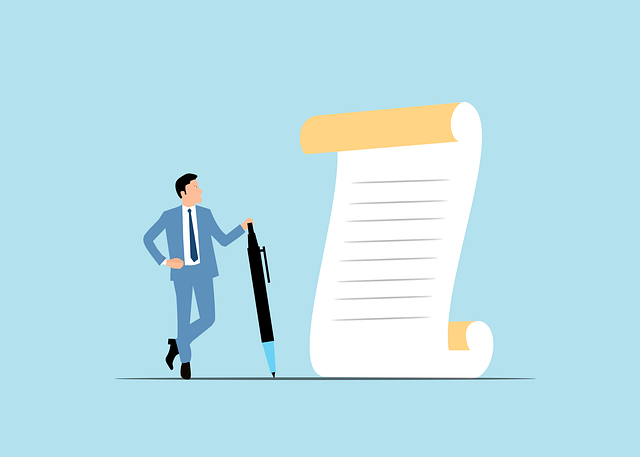Uncovering Benefits: Experienced Workplace Back Injury Lawyers
Workplace back injuries, common globally due to factors like repetitive motions, heavy lifting, and…….
In the ever-evolving landscape of occupational health and safety, the role of a ‘Workplace Back Injury Lawyer’ has emerged as a critical pivot point, ensuring justice and compensation for workers suffering from back injuries related to their jobs. This comprehensive article aims to dissect and demystify this specialized legal field, offering readers an in-depth understanding of its intricacies, impact, and future trajectory. From defining key terms to exploring global trends and technological innovations, we delve into the multifaceted world of workplace back injury law, empowering individuals and organizations alike with knowledge.
A ‘Workplace Back Injury Lawyer’ is a legal professional specializing in representing employees who have sustained injuries to their spine or back while on the job. This specialized practice area falls under the broader category of workers’ compensation law, focusing on instances where physical tasks or ergonomic factors contribute to back-related ailments. Lawyers in this field advocate for injured workers’ rights, ensuring they receive fair compensation and access to necessary medical care.
The scope includes:
The concept of workplace safety and legal protections for employees has evolved over centuries. In ancient times, labor laws were scarce, leaving workers vulnerable to hazardous conditions. The Industrial Revolution brought about significant changes, leading to increased awareness of work-related injuries and the birth of workers’ compensation systems in the late 19th century.
Over time, specific legal frameworks emerged to address back injuries, especially with the rise of manual labor and heavy industry. In the United States, for instance, the Occupational Safety and Health Administration (OSHA) was established in 1970, introducing regulations aimed at preventing workplace hazards, including those contributing to back injuries. This evolution led to the specialization within legal fields, giving rise to workplace back injury lawyers.
The impact of workplace back injury law extends beyond national borders, with many countries adopting similar principles and frameworks. The International Labour Organization (ILO) plays a pivotal role in setting global standards for occupational health and safety, influencing legal practices worldwide.
Regional Variations:
The workplace back injury lawyer market is influenced by several economic factors:
| Factor | Impact |
|---|---|
| Injury Prevalence: Higher rates of back injuries in specific industries drive demand for legal services. | Increased Client Base |
| Economic Conditions: Recessions may lead to reduced claims, while booms can increase workplace hazards and litigation. | Fluctuating Demand |
| Labor Laws: Changes in workers’ compensation regulations impact lawyer strategies and fees. | Market Shifts |
| Industry Specialization: Specialized lawyers in high-risk industries command higher rates. | Pricing Dynamics |
Law firms investing in workplace back injury law often focus on:
Workplace back injury lawyers play a vital role in economic systems by:
Technology has revolutionized the workplace back injury lawyer’s approach:
Technological advancements have led to:
The future holds immense potential for technology in this field:
Workplace back injury law is shaped by various policy and regulatory bodies:
| Aspect | Description |
|---|---|
| Occupational Health and Safety Act/Regulation: Comprehensive laws outlining employer responsibilities, employee rights, and safety standards. | Provides Legal Framework |
| Workers’ Compensation Laws: Ensure employees receive benefits for work-related injuries, including medical care and income replacement. | Protects Injured Workers |
| Ergonomics Standards: Define workplace design, task requirements, and equipment to prevent back injuries. | Prevents Hazards |
| Injury Reporting Requirements: Mandate reporting of serious or fatal accidents for investigation and prevention. | Facilitates Safety Improvement |
| Dispute Resolution Mechanisms: Establish procedures for resolving legal disputes related to compensation claims. | Ensures Fairness |
Policies and regulations significantly impact workplace back injury lawyer strategies:
Despite its significance, workplace back injury law faces several challenges:
In a bustling construction city, a young worker, Sarah, suffered a severe back injury while lifting heavy materials. A workplace back injury lawyer, specializing in construction law, took up her case. Through meticulous investigation, they uncovered multiple violations, including inadequate training and unsafe lifting practices. The lawyer’s persistent advocacy led to a significant settlement, ensuring Sarah’s medical coverage and a secure future. This case demonstrated the lawyer’s ability to navigate complex construction sites and deliver justice.
A tech startup faced scrutiny after several employees developed back problems related to their office setup. A law firm specializing in workplace ergonomics took on the case, arguing that the company had failed to provide a safe work environment. Through expert testimony and detailed documentation, they secured a settlement that not only compensated affected workers but also mandated significant ergonomic upgrades for the entire office. This case highlighted the lawyer’s role in preventing future injuries through legal enforcement.
A factory worker, David, developed chronic back pain due to years of strenuous labor. His workplace back injury lawyer helped him navigate a complex claim process, ensuring he received long-term disability benefits and medical coverage. The lawyer’s expertise in navigating bureaucratic hurdles ensured David’s financial security during his recovery. This case underscored the critical role lawyers play in providing ongoing support to injured workers.
The future of workplace back injury law holds several promising avenues:
The ‘Workplace Back Injury Lawyer’ is a critical pillar in the broader landscape of occupational health and safety, ensuring that workers suffering from back injuries receive justice and compensation. This article has provided a comprehensive overview, exploring historical context, global trends, economic considerations, technological advancements, policies, challenges, and inspiring case studies.
As we look ahead, the future of this specialized field promises exciting possibilities. From technological breakthroughs to evolving regulatory landscapes, workplace back injury law will continue to adapt and evolve, ensuring that employees worldwide have access to legal protection and support for their well-being.
Q: What is the primary role of a Workplace Back Injury Lawyer?
A: Their main role is to represent employees who have sustained back injuries related to their jobs, ensuring they receive fair compensation, medical care, and ergonomic workplace improvements.
Q: Are there any specific qualifications required to become one?
A: Yes, typically a law degree, license to practice, and specialized training in workers’ compensation, ergonomics, and relevant legal fields are essential.
Q: How do I know if my back injury is work-related?
A: A thorough medical evaluation by a qualified professional is crucial. They will assess your condition, work history, and environmental factors to determine the cause and liability.
Q: Can you explain the process of filing a claim?
A: The process involves several steps: incident reporting, medical documentation, benefit application submission, negotiation with insurance companies or employers, and potential legal action if settlement fails.
Q: Are there any regional differences in how back injury claims are handled?
A: Absolutely. Laws and regulations vary globally, impacting claim procedures, benefit entitlements, and the role of lawyers. Understanding local laws is essential for successful navigation.

Workplace back injuries, common globally due to factors like repetitive motions, heavy lifting, and…….

Workplace back injuries often result in legal complexities, making a workplace back injury lawyer es…….

Workplace back injuries, prevalent in manual labor sectors like construction and healthcare, stem fr…….

Insurance companies frequently resist workplace injury claims due to financial motives and legal str…….

Many workers avoid hiring a workplace back injury lawyer due to misconceptions about cost and comple…….

Employees injured at work have legal protections, and understanding their rights is crucial. A speci…….

Insurance companies often deny workplace back injury claims using tactics like blaming employee negl…….

Injury legal services specialize in helping individuals affected by physical harm due to another par…….

Workplace back injuries, often caused by unsafe conditions or employer negligence, result in physica…….

Spinal injury litigation requires specialized knowledge of complex medical evidence and stringent le…….